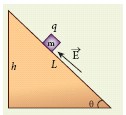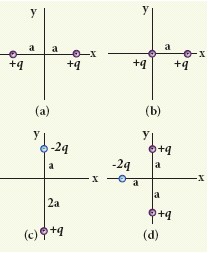- State Board
-
12th Standard
-

Biology
-

Computer Applications
-

Computer Science
-

Business Maths and Statistics
-

Commerce
-

Economics
-

Maths
-

Chemistry
-

Physics
-

Computer Technology
-

History
-

Accountancy
-

Tamil
-

Maths
-

Chemistry
-

Physics
-

Biology
-

Computer Science
-

Business Maths and Statistics
-

Economics
-

Commerce
-

Accountancy
-

History
-

Computer Applications
-

Computer Technology
-

English
12th Standard stateboard question papers & Study material
தமிழ் Subjects
English Subjects
-
-
11th Standard
-

Maths
-

Biology
-

உயிரியல் - தாவரவியல்
-

Economics
-

Physics
-

Chemistry
-

History
-

Business Maths and Statistics
-

Computer Science
-

Accountancy
-

Commerce
-

Computer Applications
-

Computer Technology
-

Tamil
-

Maths
-

Commerce
-

Economics
-

Biology
-

Business Maths and Statistics
-

Accountancy
-

Computer Science
-

Physics
-

Chemistry
-

Computer Applications
-

History
-

Computer Technology
-

Tamil
-

English
11th Standard stateboard question papers & Study material
தமிழ் Subjects
English Subjects
-
-
9th Standard
-

-

-

-

-

-

-

Maths
-

Science
-

Social Science
-

Maths
-

Science
-

Social Science
9th Standard stateboard question papers & Study material
தமிழ் Subjects
English Subjects
-
-
6th Standard
-

Maths
-

Science
-

Social Science
-

Maths
-

Science
-

Social Science
6th Standard stateboard question papers & Study material
தமிழ் Subjects
English Subjects
-
-
10th Standard
-

Maths
-

Science
-

Social Science
-

Tamil
-

Maths
-

Science
-

Social Science
-

English
-

English
10th Standard stateboard question papers & Study material
தமிழ் Subjects
English Subjects
-
-
7th Standard
-

Maths
-

Science
-

Maths
-

Science
-

Social Science
7th Standard stateboard question papers & Study material
தமிழ் Subjects
English Subjects
-
-
8th Standard
-

கணிதம் - old
-

Science
-

Social Science
-

கணிதம்
-

Maths
-

Science
-

Social Science
8th Standard stateboard question papers & Study material
தமிழ் Subjects
English Subjects
-
-
12th Standard
- CBSE Board
-
12th Standard CBSE
-

Biology
-

Physics
-

Chemistry
-

Maths
-

Accountancy
-

Introductory Micro and Macroeconomics
-

Business Studies
-

Economics
-

Computer Science
-

Geography
-

English
-

History
-

Indian Society
-

Physical Education
-

Sociology
-

Tamil
-

Bio Technology
-

Engineering Graphics
-

Entrepreneurship
-

Hindi Core
-

Hindi Elective
-

Home Science
-

Legal Studies
-

Political Science
-

Psychology
12th Standard CBSE Subject Question Paper & Study Material
-
-
11th Standard CBSE
-

Mathematics
-

Chemistry
-

Biology
-

Physics
-

Business Studies
-

Accountancy
-

Economics
-

Computer Science
-

Bio Technology
-

English
-

Enterprenership
-

Geography
-

Hindi
-

History
-

Home Science
-

Physical Education
-

Political Science
-

Psychology
-

Sociology
-

Applied Mathematics
11th Standard CBSE Subject Question Paper & Study Material
-
- 10th Standard CBSE
-
9th Standard CBSE
-

Mathematics
-

Social Science
-

Science
-

English
-

Hindi
9th Standard CBSE Subject Question Paper & Study Material
-
-
8th Standard CBSE
-

Science
-

Social Science
-

Mathematics
-

English
8th Standard CBSE Subject Question Paper & Study Material
-
-
7th Standard CBSE
-

Mathematics
-

Science
-

Social Science
-

English
7th Standard CBSE Subject Question Paper & Study Material
-
-
6th Standard CBSE
-

Mathematics
-

Science
-

Social Science
-

English
6th Standard CBSE Subject Question Paper & Study Material
-
-
12th Standard CBSE
- Free Online Test
- News
- Study Materials
-
Students
-

Stateboard Tamil Nadu
-

CBSE Board
-

Free Online Tests
-

Educational News
-

Scholarships
-

Entrance Exams India
-

Video Materials
Study Materials , News and Scholarships
-
-
Students

12th Standard Physics English Medium Important 3 Mark Book Back Questions (New Syllabus) 2020 Question Bank Software Sep-01 , 2020
12th Standard Physics English Medium Important 3 Mark Book Back Questions (New Syllabus) 2020
Important 3 Mark Book Back Questions (New Syllabus) 2020
12th Standard
-
Reg.No. :
Physics
Time :
01:00:00 Hrs
Total Marks :
114
-
Calculate the number of electrons in one coulomb of negative charge.
-
A block of mass m carrying a positive charge q is placed on an insulated frictionless inclined plane as shown in the figure. A uniform electric field E is applied parallel to the inclined surface such that the block is at rest. Calculate the magnitude of the electric field E.

-
Calculate the electric dipole moment for the following charge configurations.

-
Derive an expression for the torque experienced by a dipole due to a uniform electric field.
-
Obtain the expression for energy stored in the parallel plate capacitor.
-
Determine the number of electrons flowing per second through a conductor, when a current of 32 A flows through it.
-
Resistance of a material at 20oC and 40oC are 45 Ω and 85 Ω respectively. Find its temperature coefficient of resistivity.
-
Let the magnetic moment of a bar magnet be \(\overset { \rightarrow }{ { p }_{ m } } \) whose magnetic length is d = 2l and pole strength is qm. Compute the magnetic moment of the bar magnet when it is cut into two pieces
(a) along its length
(b) perpendicular to its length. -
Show the time period of oscillation when a bar magnet is kept in a uniform magnetic field is \(T=2\pi \sqrt { \frac { 1 }{ { p }_{ m }B } } \) in second, where I represents a moment of inertia of the bar magnet, pm is the magnetic moment and B is the magnetic field.
-
The magnetic field shown in the figure is due to the current carrying wire. In which direction does the current flow in the wire?
-
Obtain a relation for the magnetic field at a point along the axis of a circular coil carrying current using Biot-Savart law.
-
What is tangent law? Discuss in detail.
-
A closed coil of 40 turns and of area 200 cm2, is rotated in a magnetic field of flux density 2 Wb m–2. It rotates from a position where its plane makes an angle of 30o with the field to a position perpendicular to the field in a time 0.2 s. Find the magnitude of the emf induced in the coil due to its rotation.
-
A conducting rod of length 0.5 m falls freely from the top of a building of height 7.2 m at a place in Chennai where the horizontal component of Earth’s magnetic field is 4.04 × 10–5 T. If the length of the rod is perpendicular to Earth’s horizontal magnetic field, find the emf induced across the conductor when the rod is about to touch the ground. (Assume that the rod falls down with constant acceleration of 10 m s–2)
-
The self-inductance of an air-core solenoid is 4.8 mH. If its core is replaced by iron core, then its self-inductance becomes 1.8 H. Find out the relative permeability of iron.
-
Using Faraday’s law of electromagnetic induction, derive an equation for motional emf.
-
How are the three different emfs generated in a three-phase AC generator? Show the graphical representation of these three emfs.
-
Prove that the total energy is conserved during LC oscillations.
-
The relative magnetic permeability of the medium is 2.5 and the relative electrical permittivity of the medium is 2.25. Compute the refractive index of the medium.
-
Write down the properties of electromagnetic waves.
-
Derive the equation for acceptance angle and numerical aperture of optical fibre.
-
Explain the Young’s double slit experimental setup and obtain the equation for path difference.
-
Explain the experimental determination of refractive index of the material of the prism using spectrometer.
-
Light travelling through transparent oil enters in to glass of refractive index 1.5. If the refractive index of glass with respect to the oil is 1.25, what is the refractive index of the oil?
-
The thickness of a glass slab is 0.25 m. It has a refractive index of 1.5. A ray of light is incident on the surface of the slab at an angle of 60o. Find the lateral displacement of the light when it emerges from the other side of the glass slab.
-
If the focal length is 150 cm for a lens, what is the power of the lens?
-
Find the dispersive power of a prism if the refractive indices of flint glass for red, green and violet colours are 1.613, 1.620 and 1.632 respectively.
-
Explain how frequency of incident light varies with stopping potential.
-
Derive an expression for de Broglie wavelength of electrons.
-
Light of wavelength 390 nm is directed at a metal electrode. To find the energy of electrons ejected, an opposing potential difference is established between it and another electrode. The current of photoelectrons from one to the other is stopped completely when the potential difference is 1.10 V. Determine i) the work function of the metal and ii) the maximum wavelength of light that can eject electrons from this metal.
-
Discuss the gamma emission process with example.
-
Explain in detail the four fundamental forces in nature.
-
Calculate the average atomic mass of chlorine if no distinction is made between its different isotopes?
-
Write a note on photodiode.
-
State and prove De Morgan’s first and second theorem.
-
In a transistor connected in the common base configuration, \(\alpha\) = 0 95, IE = 1 mA. Calculate the values of IC and IB.
-
Explain the basic elements of communication system with the necessary block diagram.
-
Discuss the functions of key components in Robots?
Part A
38 x 3 = 114






 12th Standard Physics Syllabus
12th Standard Physics Syllabus  12th Standard Physics Study Materials
12th Standard Physics Study Materials 12th Standard Physics MCQ Practise Tests
12th Standard Physics MCQ Practise Tests 

Reviews & Comments about 12th Standard Physics English Medium Important 3 Mark Book Back Questions (New Syllabus) 2020
Write your Comment